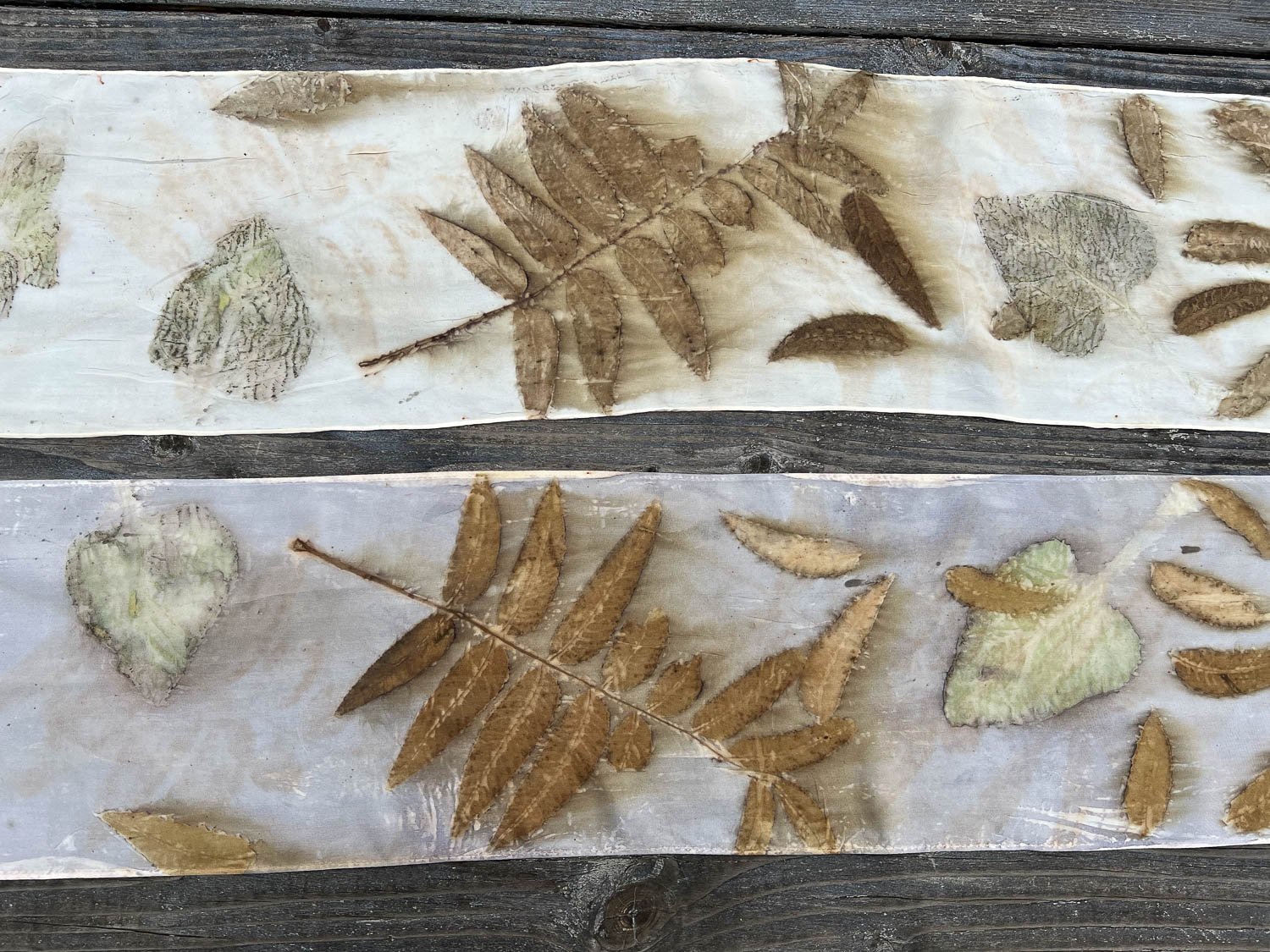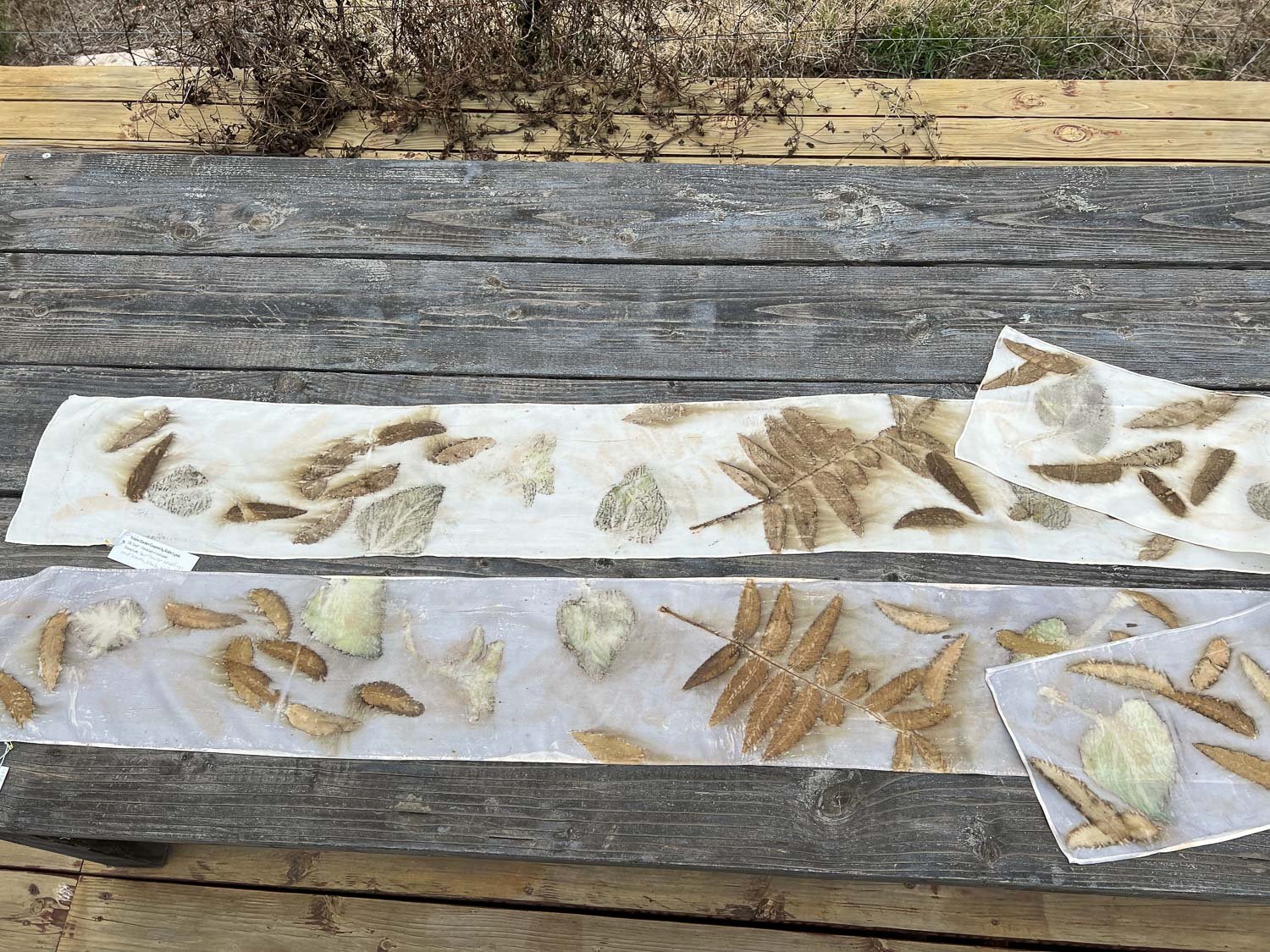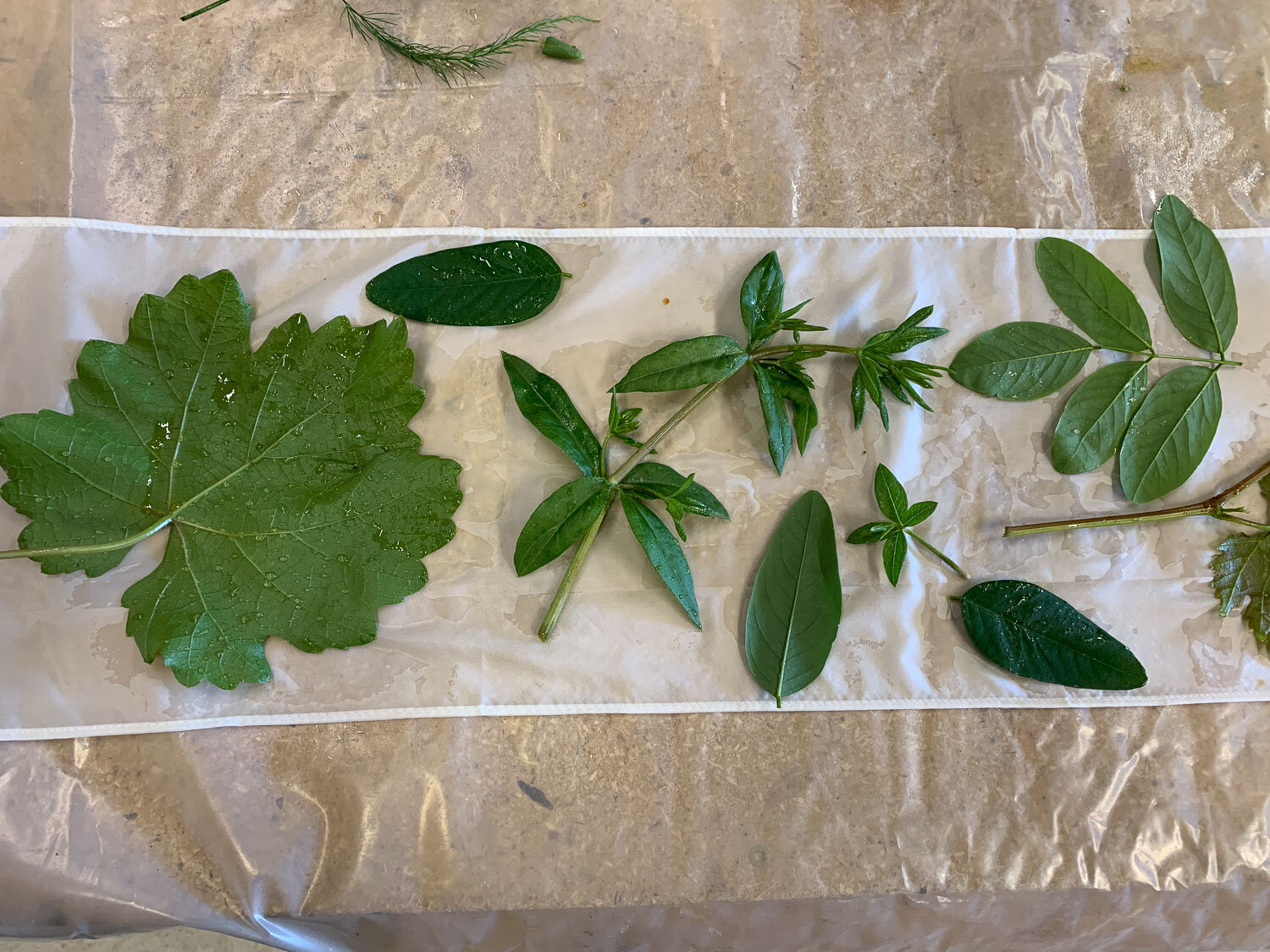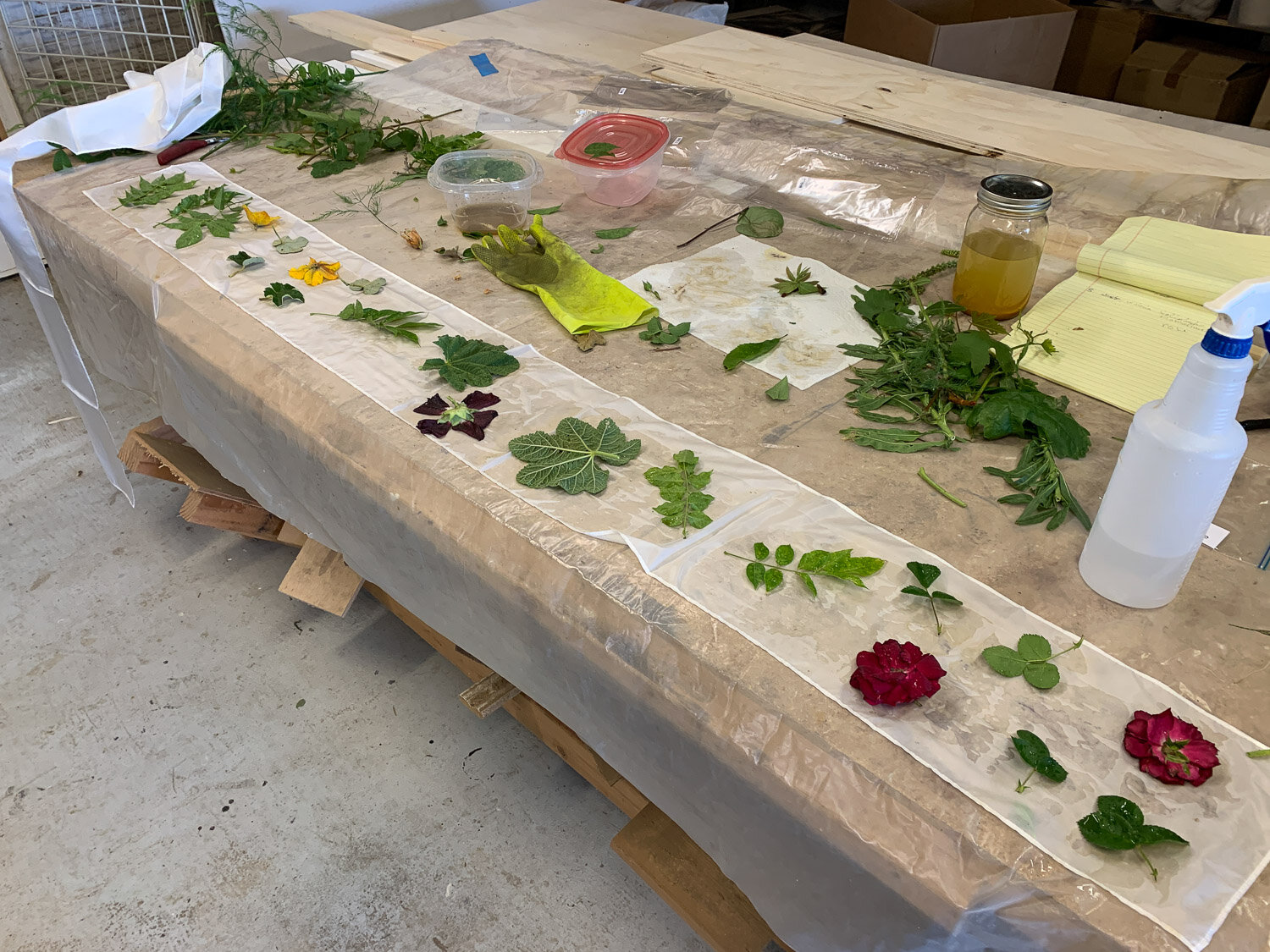Across the Road Inspired Ecoprints
/It is rather last minute to still be working on things for Christmas sales, but I will be driving by the Artery today and have time to drop off a few more items.
A walk Across the Road inspired these last ecoprint scarves. I refer to them as Solano Garden Botanical Prints. Every time I do one of these I consider it an experiment. There are so many variables. Which part of the plant? Fresh or dry? Growing or dormant season? Front or back side of the leaf facing the iron or tannin soaked scarf?
This is the collection I brought home. Top left is an osage orange fruit (not edible) and some twigs. Next are black walnut leaves ready to fall off the tree. Third from left, top row, are a couple of sunflower seedlings that grew after the rain that germinated the leftover sunflower seeds at the edge of the field. Eucalyptus twigs and leaves are on the right. Just left of the eucalyptus is mistletoe. Bottom center is a pisolithus, a fungus known as dog turd fungus, that was emerging from the hard-packed dirt road. I’ll save that for a later dye-bath. There are also some oak galls and a couple of oranges.
Experiments 1 and 2. The scarves on the plastic were dipped in tannin. The lower one is spread with sunflower leaves and black walnut leaves. The upper one has eucalyptus leaves and a few sprigs of mistletoe leaves and berries. After spreading out the plant material I cover the first scarf with another that has been dipped in iron, roll these up and steam them.
Experiments 3 and 4. I started to cover these with the second scarves before I remembered to take a photo. So the one at the lower edge of the table is mostly covered. It has redwood, sheoak, and eucalyptus from our property. The upper scarf is the biggest experiment. I wanted to see what would happen if I slice the osage orange fruit. Osage orange is a popular dye plant, but it is the shavings from the wood that have dye properties. I have never heard of using the fruit. When you slice it is kind of squishy with a milky sap. Hmmm. I went ahead anyway. I tried to cut small slivers of the wood as well and sprinkled those on. Then I added eucalytptus leaves.
These are the two scarves that imprinted with sunflower leaves and black walnut leaves. In each pair of scarves I find it interesting to see how the leaves react on the tannin or iron soaked surfaces.
These are the same scarves, but a close up of a different part.
This is how those two scarves look.
These are the scarves with eucalyptus and mistletoe. The tannin soaked scarf shows something of the mistletoe—that’s the smudgy part, but there is very little on the iron soaked scarf. It’s interesting how the eucalyptus looks so different on the two.
Here’s the crazy one. Those circles are the osage orange fruit. The cut up twigs didn’t do much—there are some spots that you see on the upper scarf.
This is eucalyptus leaves (different from the ones Across the Road), redwood, and sheoak.
I’ll be delivering some of these to the Artery soon.





























































